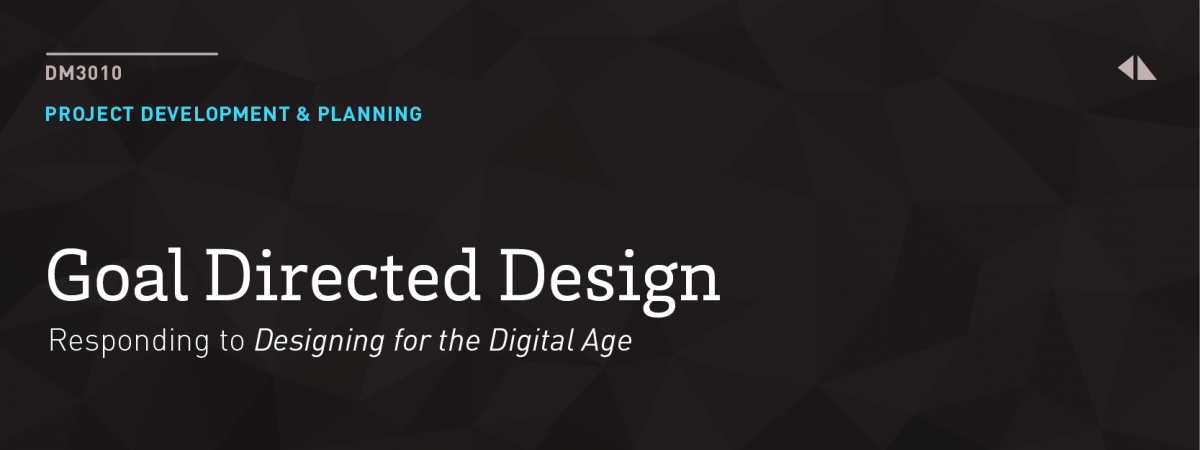While I enjoyed reading the first chapter of Kim Goodwin’s Designing for the Digital Age, I was a little thrown off at first as the text was not at all what I was expecting.
I was prepared to read a scholarly take on the principles and practices for designing for digital experiences, but the text left me with a good summary of practical design thinking techniques. The concept of using a real-world company’s approach to design thinking and planning was very useful and much more engaging compared to an imaginative thinking exercise that most academia tends to delve into. It also greatly helped that the techniques discussed come straight out of Cooper, an interactive design solutions company that I greatly admire for their ideas on design leadership and planning.

The largest take away from the reading most definitely had to be Goal Directed Design process. I like how Goodwin was able to succinctly put across the premise and steps required to design a good product/experience based on the goals that said product should fulfill. I have always been a proponent of this approach to design – thinking with the end in mind – that it felt validating to see it in print. The bonus was having the process involved explained in an easy to follow flowchart.
Many people are quick to assume that design is a largely aesthetics. But the truth of the situation, which the author eloquently summarizes is that design requires considerable thought to the object’s purpose and function as well. Goal oriented design places the object’s function at the forefront with the added considerations of how potential users of this object will interact with it. This helps designers grapple with and identify potential pitfalls and issues when going about designing the said object.
The steps place planning and research at the start to help designers understand and shape the functions and scope of the object they are about to conceive and make it such that the project cannot move on productively until these requirements are considered and satisfied. This leaves little room for a design project to being subjected to stalls due to a shift in the core requirements of the project or potential end-users.
Some questions that popped into my mind after reading through the text include:
- How can we incorporate other design process philosophies into the GDD such as iterative design (where user testing is a major emphasis in instructing the design methodology)?
- When creating design processes for products or services that have no precedents, what approaches can one take to safeguard the possibility of designing a solution to something that’s not actually a problem?

